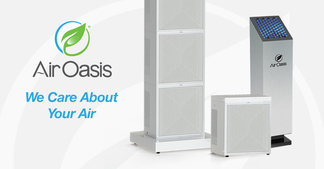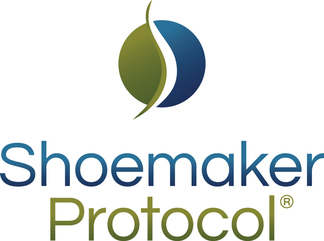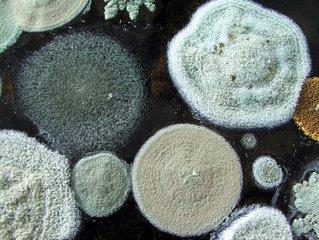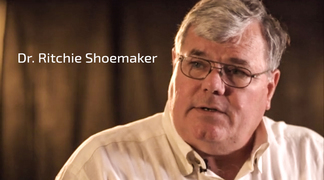Indoor Mold

Killing It Is Not Enough
Indoor air quality is a broad field that continues to bedevil building service professionals. But the shift in focus over the last five years from general concerns such as adequate ventilation and sick building syndrome to mold contamination has caught many service contractors by surprise, particularly when they are asked for advice in dealing with mold growth or blamed for its appearance.
Unfortunately, many contractors are struggling to identify the current best practices in regards to mold – a reasonable way to evaluate potential contamination and implement control measures. With limited time, service managers try to make sense of media reports, liability concerns, and scientific research. As they dig deeper, many have found that media reports are often condensed sound bites, legal cases tend to emphasize the extremes of liability in an effort to win or fend off a claim, and scientific reports are filled with technical jargon or narrow limitations that restrict their application to the real world.
Without good information, positions related to mold situations are inclined to polarize. The extreme positions can be categorized as fungiphobics, those who are frightened by a single mold spore, and those who refuse to accept any possibility of health-related problems due to mold exposure, the mold minimizers.
The first step in developing a reasonable approach to mold is to understand that there is a reasonable approach. Many service professionals have the mistaken impression that liability concerns, based on high-profile lawsuits, are the driving force in the industry. In the absence of federal or uniform state regulations related to mold control, attorneys are clarifying the industry standard of care, not creating their own. By carefully examining generally available industry reference documents relating to mold, attorneys have been able to identify points of commonality which they correctly interpret as a de facto industry standard of care. Unfortunately, many service providers are asked to talk intelligently about the mold situation in general and/or make decisions about mold contamination conditions in their contract facilities without even understanding what the industry reference materials are, let alone the points of intersection between them.
While there is some variation in which references really form the core of the mold control industry, the following ten documents are cited frequently.
Despite the fact that guidance for mold situations is coming from a variety of sources, there is a surprising consistency in the overall tone and approach. Some key consensus points that should frame any mold discussion include:
- The understanding that mold is a biological agent. Since it has the ability to grow under the right conditions, isolation and deferred action to remove the source of the problem may not be possible as it is with asbestos materials. In such situations, the delay may allow mold contamination inside a building to grow to a point where it poses a hazard greater than when initially discovered.
- Mold growth means that there is or has been moisture intrusion in the building. Removing surface mold contamination and not identifying and correcting the underlying moisture problem would be tantamount to a doctor treating symptoms rather than the disease itself.
- Exposure to mold spores and other byproducts (microbial volatile organic compounds, mycotoxins, connecting filaments, etc) does cause real health symptoms. These symptoms can range from mildly annoying allergic reactions to serious, and even life-threatening, ailments.
- Individuals respond to mold exposure in a variety of ways. There is a large variation in individual susceptibility to the same exposure levels and the possibility of a person becoming sensitized to specific specie of mold growing in a certain location. When added together this means that the range of potential responses to fungal exposure is greater than what is seen for many industrial chemicals.
- Killing mold, but leaving the residue in place, is not acceptable. Since many health impacts can be triggered by exposure to both live and dead mold spores, the source and secondary contamination must be removed.
- Mold removal is called remediation because special precautions, equipment and work procedures should be used to prevent the spread of material to other parts of the building.
Unfortunately, what this means is that there is no “quick fix” for mold contamination situations. The advertisements for various “magic potions” which “kills mold dead” are often not the best choice for contamination in commercial buildings since leaving mold residue behind puts the contractor outside the industry standard of care. A common sense assessment and remediation by trained individuals is the best way to protect the occupants, the building owner, and the service contractor.
As always, communication is the key. Even if a reasonable plan is developed and carried out, the proper communication of the remediation process may ultimately turn out to be just as important as competent performance of the work. To communicate clearly and convincingly, a service contractor should emphasize that the subject of mold exposure and control is complex, with many diverse opinions. Despite this diversity of opinion, an industry standard of care is in place which avoids the two extremes of mold minimizers and fungiphobics.
Staying within the standard of care, emphasizing the protection of occupants, workers, and building structures, and promoting the goal of a safe environment rather than pristine or spore- free indoor air, will help the smart building service provider navigate the tricky terrain of mold discussions.
About the Author
Michael A. Pinto currently serves as Chief Executive Officer of Wonder Makers Environmental, Inc. He has more than 30 years of safety and environmental experience from jobs in the private sector, the non-profit arena, and regulatory agencies. Michael is the author of five books, including Fungal Contamination: A Comprehensive Guide for Remediation, over 150 published articles, and 18 commercial training programs. He can be reached at map@wondermakers.com.
This article was published in the January 2005 issue of Services magazine.
Featured Resources for Remediation
AirOasis The #1 CIRS Spring Cleaning Hack
Specialized air purifiers are revolutionizing deep cleaning, no matter the season. They’re a game changer for remediation purposes, too.
Shoemaker Protocol™ Quick Start:
The 3 initial steps to determine if mold is affecting you One of the most common questions we hear is, “how do I know if I have mold illness?” Rest assured, if you’re asking this question, you’ve come to the right place.
Free Got Mold Guide
The only science-based, proven, peer-reviewed path to recovery. Discover the Shoemaker process and protocol for diagnosing, testing and treating Mold Illness.
The Surviving Mold Membership Program
The Membership Program was created as a place for both CIRS patients and practitioners to learn, stay current, connect, and thrive as they learn what it means to navigate life with CIRS.
Healing connections: Doctors who embrace their practice with the soul of a poet.
The following article pulls a few excerpts from a piece by one of Dr. Shoemaker’s patients, Shaler McClure Wright. The piece appeared as an episode in a series titled, “Soul Chronicles for the Chronically Ill” on healthstorycollaborative.org




